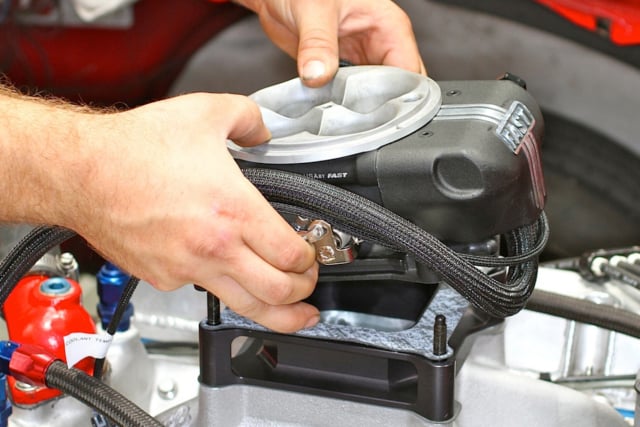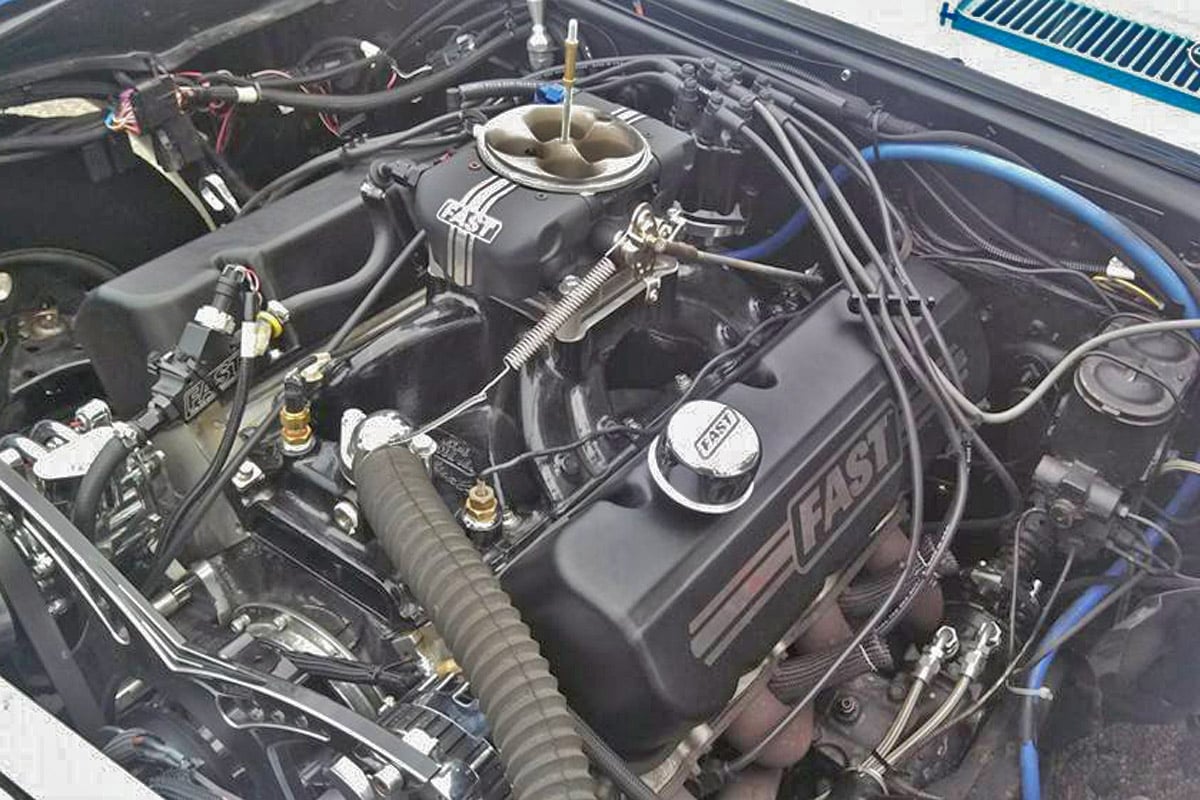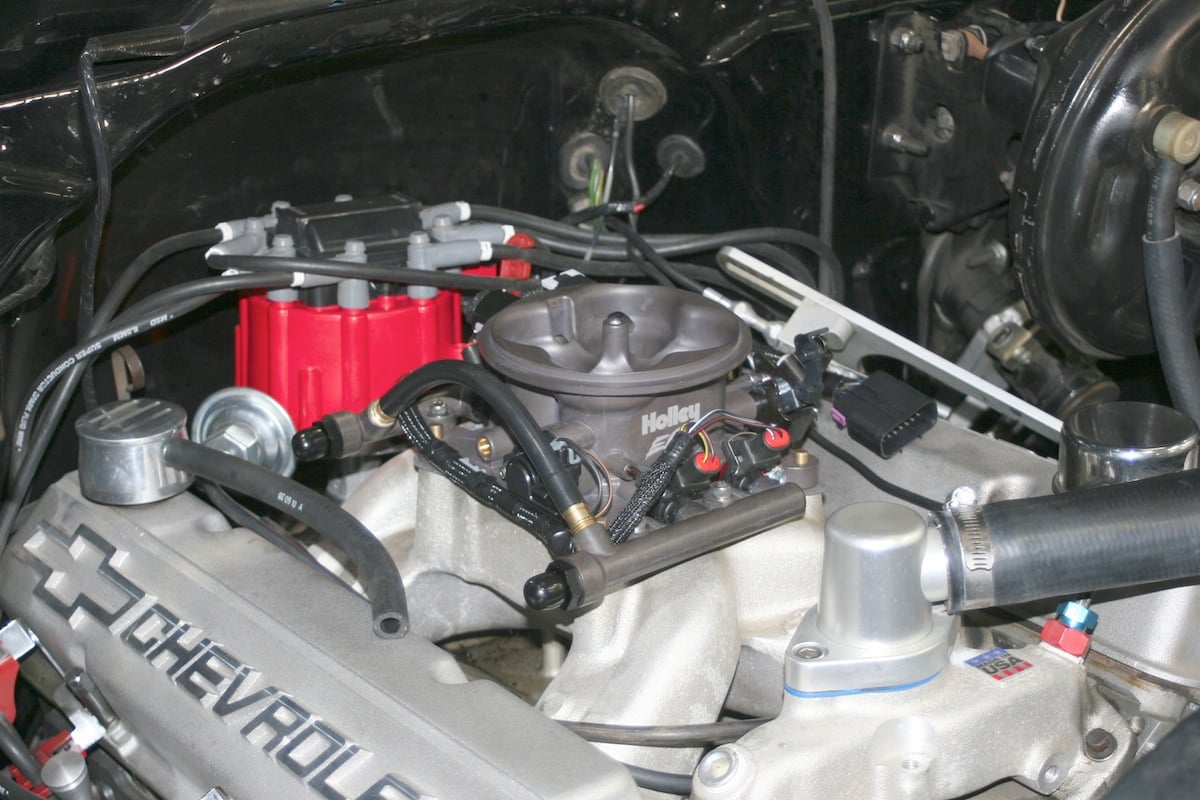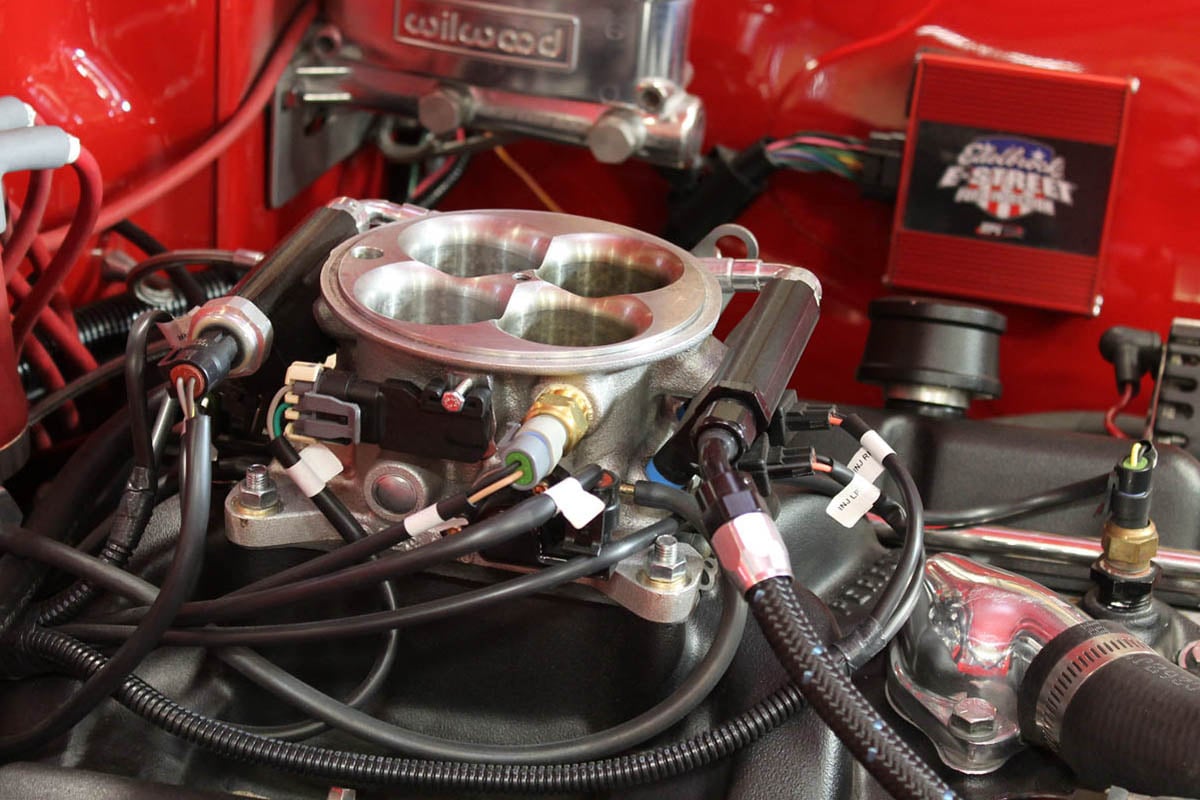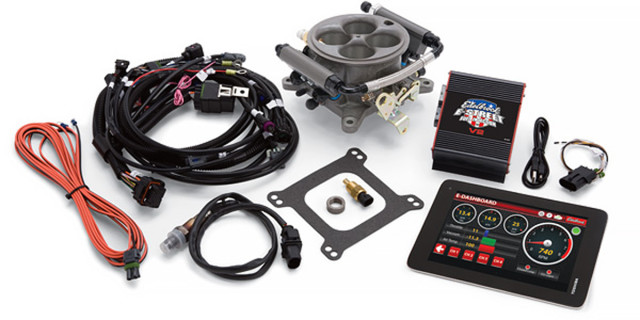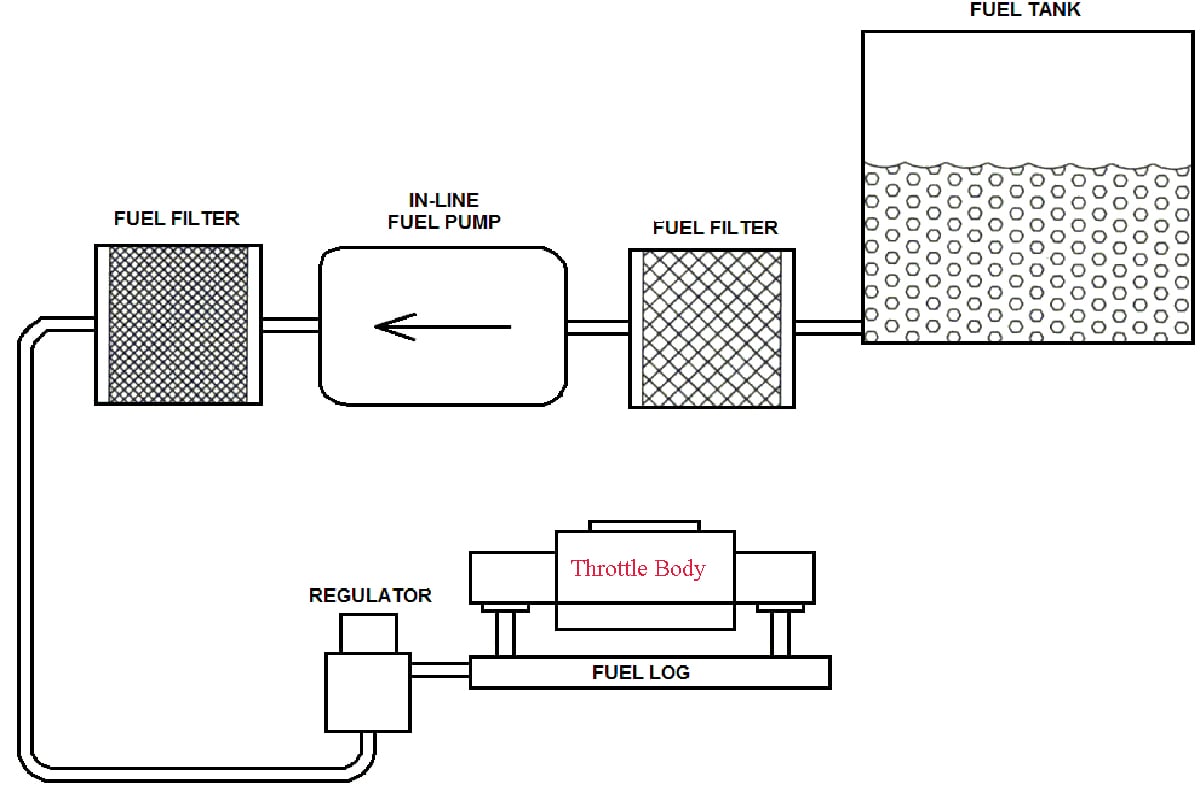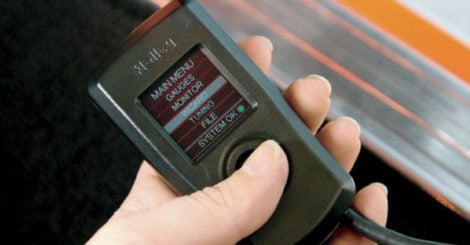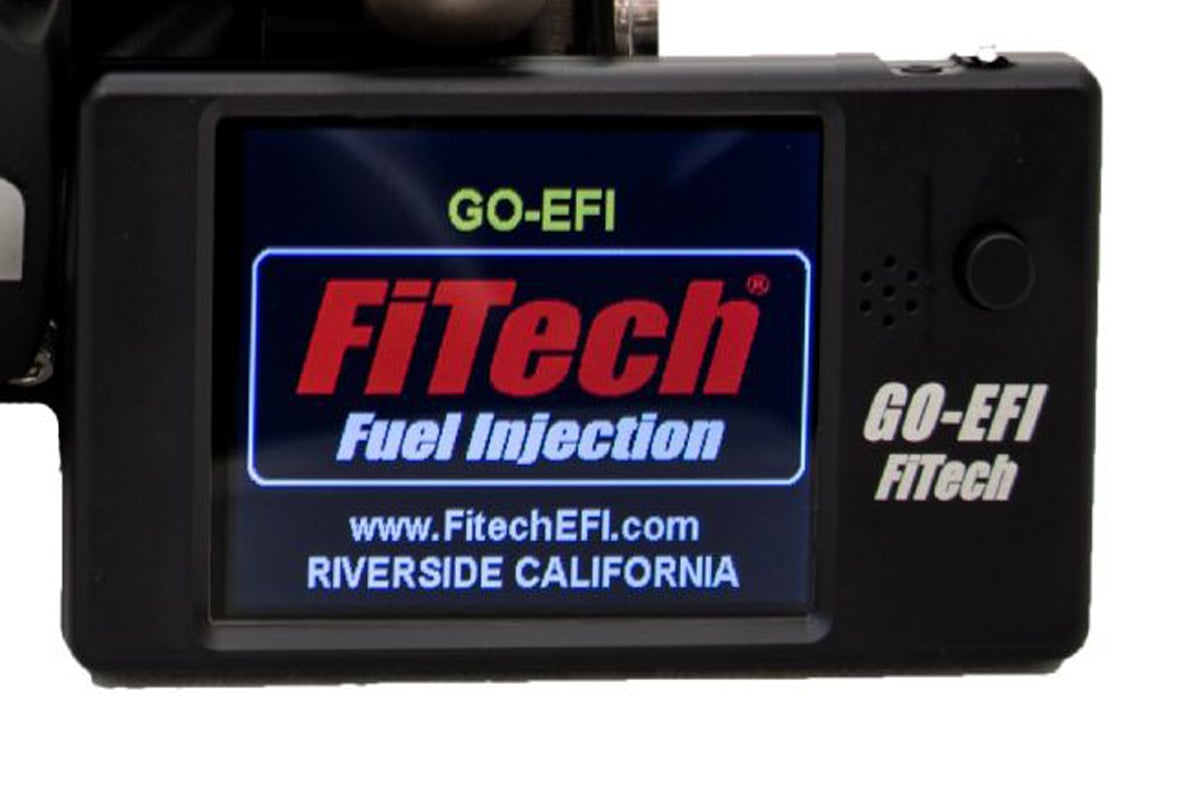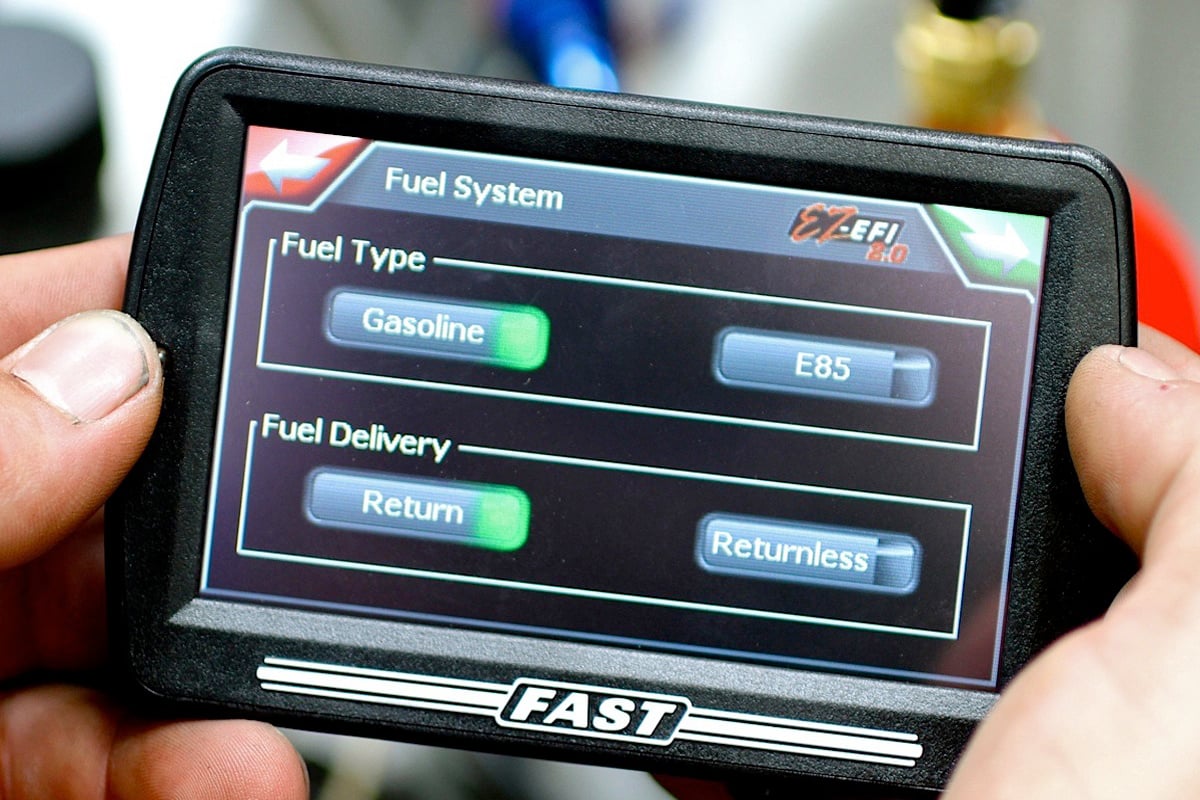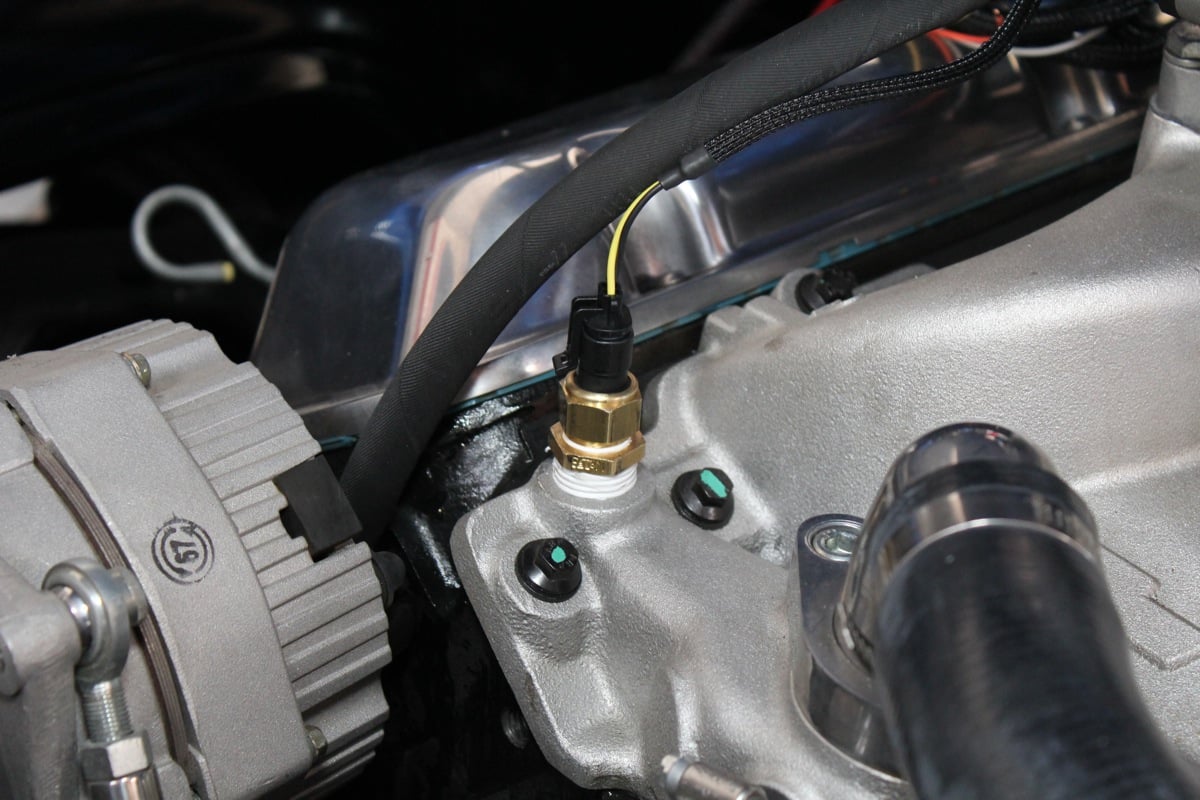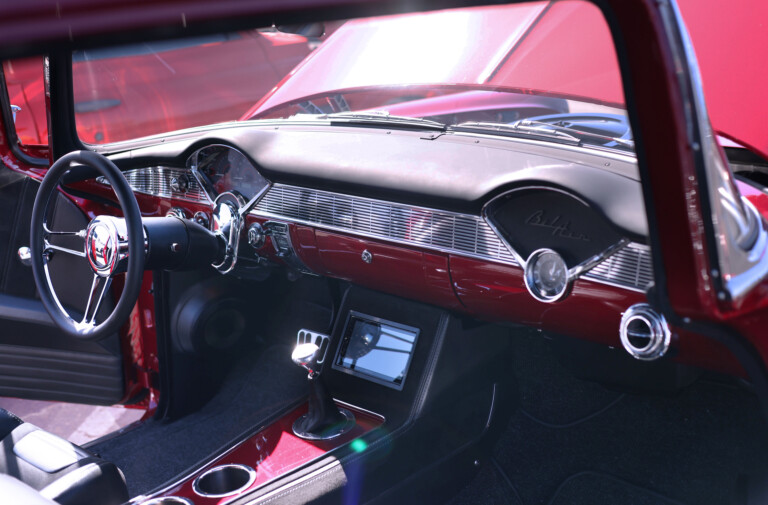Electronic fuel injection has come a long way in the last 20 or 30 years. When some of the first, early aftermarket systems came about, they were not only confusing to install, they were also slow in regards to the computers they used. To actually use or tune the system, you were limited by your computer-programming knowledge. In other words, you had to possess not only the talents of a mechanic, but those of a computer geek. Fortunately, a lot has changed in the last decade or so, and installing an aftermarket EFI system on your classic car has become a mainstream modification.
Another determining factor when deciding whether or not to install an EFI system in previous years had to do with the actual price of the kit. Previous generations of EFI came at a time when technology was limited, and the cost of that technology was expensive. Pair that with the complexity of installation of those previous kits, and they kept all but the bravest enthusiasts from even attempting to install an aftermarket EFI system.
Enter The Smart EFI
When the first self-learning EFI systems came on the scene several years ago, most do-it-yourself mechanics were understandably skeptical. They still had nightmares revolving around previous attempts at installation, so their fear was perceived to be justified. But, like all “computer tech,” these systems have been around for a while, and have benefited from improved technology and electronics.
In an attempt to curb any reservations you might have about installing an aftermarket EFI kit on your car, we contacted a few of the major players that have developed kits, and asked them some of the questions that you have asked us. Fuel Air Spark Technologies (FAST), FiTech, Holley Performance Products, and Edelbrock provided answers, and dispelled some of myths that have been floating around on the Internet. By getting the answers straight from the horses’ mouths so to speak, we hope to alleviate any concerns you might have about installing one of these kits on your classic ride.
The current crop of available EFI kits, have been refined to a point that the installation really has become a simple process — the need for tuning is virtually non-existent. For the most part, these simple-to-use-and-install systems now afford classic car owners the luxury of fuel injection, with an easy installation process.
All of the systems from the aforementioned suppliers use a standard 4150-flange throttle body, making installation of the throttle body as easy as bolting a carburetor onto your car’s engine. Okay, that’s the easy part. Installing an EFI-quality fuel-delivery system is also required, and does involve some planning and forethought.
Fuelish Delivery
There are two types of fuel systems that can be used: a return-style and a non-return style. Just to keep it simple, a non-return style system means the fuel is delivered from the tank to the fuel pressure regulator, and the regulator only allows a required amount of fuel to the engine. The regulator holds the pressure. With a return-style system, there is an additional fuel line connected to the regulator that allows the excess fuel that is not required for engine function to return to the fuel tank. So, which system does your car require? David Page of FAST tells us, “The best returnless systems incorporate a way to dampen fuel-pressure pulses. Other than that, the pump used must be designed to be operated using pulse-width modulation. Extremely hot climates may not be the best choice for a returnless system, because of the increased risk of vapor lock.”
Eric Blakely of Edelbrock says, “Edelbrock does not offer a returnless fuel system because our core EFI customer-conversions to EFI are for pre-1974 vehicles with old school, non-baffled fuel tanks. Any EFI system — and particularly self-learning types, require a constant and steady fuel supply. When the fuel level in these older vehicles is less than 1/4 tank, they experience fuel slosh, which uncovers the fuel pickup and causes an unstable, severely-aerated fuel supply to the fuel pump.”
On the left is a non-return fuel system, while the right shows a return-style system.
There is a way that cars with engines that were previously carbureted, can get around building an EFI-dedicated fuel system. Both Edelbrock and FiTech offer a remote-mounted fuel sump kit. These sump kits mount in your engine compartment, and the conventional fuel line that originally went to your carburetor is connected to the “in” port of the sump. From there, a high pressure hose is plumbed from the sump to the inlet port on the EFI throttle body. The stock carbureted fuel pump then feeds low-pressure fuel to the sump tank reservoir, and when the engine is running, high-pressure fuel is fed from the sump to the throttle body.
Left is the sump system from FiTech, and the Edelbrock EFI sump is on the right.
Before we continue, there is one myth that we have heard over and over that needs to be debunked. For some reason, there are still people that think that EFI can cure an improperly-running engine. This is true if your engine’s malady is a carburetor that needs rebuilt or replaced, but EFI is not a cure-all for an engine that has problems. Ken Farrell of FiTech let us know, “Make sure your surrounding systems are in good working order. If your car is running terrible and you have tried five carburetors that work perfectly on your friend’s cars, you should probably find out why it doesn’t work on yours before you order an EFI system. EFI can’t fix a camshaft with a bad lobe, or an intake gasket leak.”
Carburetor Versus EFI
Why would anyone replace a perfectly-working carburetor with an EFI system? For starters, has anyone ever seen a perfectly-working carburetor? You have to remember this about carburetors — they are a simple fuel-metering device that can be easily tuned to operate efficiently while at a steady-state of operation — like when cruising down the highway with no traffic requiring you to depress and lift-off the throttle pedal repeatedly, or when the engine is idling. In reality, cars operate at conditions where the throttle is continually moving. This movement might not be substantial, but it is occuring. It is during these throttle-transition situations where EFI has a distinct advantage over a carburetor, because it is capable of retaining a more consistent air/fuel ratio. This consistency typically results in better fuel mileage.
Carburetors work great in ideal weather conditions, and areas of the country that see little climate change. Unfortunately, ideal conditions are not constant at any location. To keep a carbureted engine optimally tuned, these changing conditions will require you tune your carburetor to match the conditions. On the other hand, these new, self-learning EFI systems are designed to automatically compensate for changing conditions.
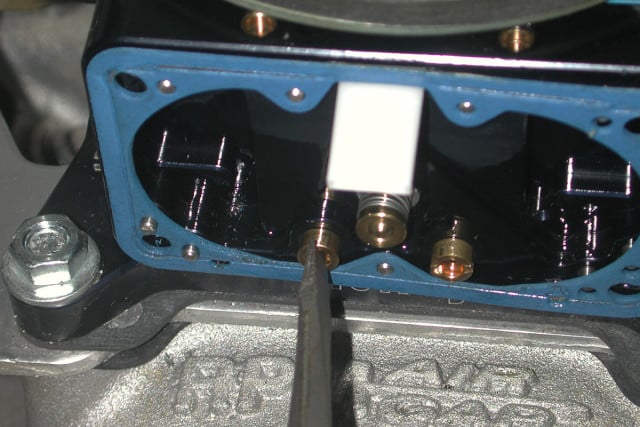
To keep in optimal running condition, carburetors usually need frequent tuning to account for different atmospheric conditions.
Alex Healey of Holley Performance Products said, “The biggest concern we hear, is the lack of familiarity. Most enthusiasts have been using carburetors all of their life. Even if they do understand the concepts of EFI calibration, the act of doing it with a keyboard or touchscreen instead of jets, floats, and screwdrivers, is uncomfortable to them.”
But why are many enthusiasts still nervous or outright afraid to install this new-fangled fuel delivery system? Many of the concerns revolve around comments that are typically generated on internet forums. All it takes is one person to suggest that a certain kit was faulty, and it seems like people can’t wait to jump on the bandwagon. In reality, if one detail of the installation is overlooked during the install process, the results will be less than adequate. According to Farrell, “Wiring is one of the most common causes of problems that we see. Some of the main issues are: voltage drops when starting the car because the positive wire is not connected directly to the battery, and poor or non-existent grounding.” Blakely agrees, and felt it pertinent to give this advice, “Read the instructions provided, and pay special attention to detail. Be sure your battery, charging system, power supply, and ground wires are all solid.”
Power Versus Benefits
When it comes down to it, enthusiasts’ interests typically revolve around one requirement — did my upgrade create more horsepower? When it comes to pulling a carburetor off your engine and replacing it with a throttle body EFI kit, a measurable increase in power is not usually an end result. That is because a properly-sized manifold and carburetor can make as much peak power as EFI. That being said, EFI does tend to produce a broader torque curve, which can be beneficial — especially in a street car.
Page let us know, “One of the first questions we get asked is, ‘how much horsepower can this system make?’ The answer is: no EFI system is capable of making horsepower, it can only support the power potential of the engine, and the fuel injectors are the limiting factor. A naturally-aspirated gasoline engine will require anywhere from .4 to .45 pounds of fuel-per-hour, per horsepower. You will need injectors that are capable of supplying the necessary fuel based on the power potential of the engine.”
Cost Analysis
As many benefits as EFI can deliver, cost is still the major reason people choose to retain carburetors on their engines. Today’s self-learning kits have made the installation of EFI on a classic car a lot easier than it has ever been, but carburetors are — and will always be, plentiful and relatively cheap. A huge concern for many enthusiasts is the entry price for an EFI kit. No matter how you cut it, changing from carburetion to fuel injection isn’t cheap. That being said, there are self-learning kits like the Go EFI 4 kit from FiTech that is currently available for $995.
Although we are talking about self-learning EFI kits, each does have a hand-held controller that will allow the user to adjust some of the operating parameters if they wish.
To give an honest cost comparison, we checked online with Jegs, just to see what the cost disparity really looks like. A newly remanufactured 725 cfm Quadrajet carburetor will set you back $330. A 750 cfm Holley Street Demon carburetor will cost you $347. Finally, depending on the fuel-injection kit you choose, you can expect to dish out anywhere from $1,000 or more. So, whether or not you feel the additional cost of EFI is worth it to you or not is entirely your call. But, it is hard to argue with the benefits that EFI offers.
There will be extra work required to install an EFI kit. There are multiple sensors that are required for the EFI to run properly, and some of these sensors might require cutting and welding.
Hopefully we have cleared up some myths and misconceptions about installing a self-learning EFI kit on your classic car, and with this new knowledge, you can comfortably change the carburetor on your ride to a more efficient EFI set up. Healey affirmed, “Don’t get overwhelmed! Although EFI is different than a carburetor, installation is not as daunting a task as most people would lead you to believe. However, make sure to take your time during the installation, especially when working on the wiring. Weak connections and bad grounds are by far the most common cause of issues in aftermarket EFI systems.



